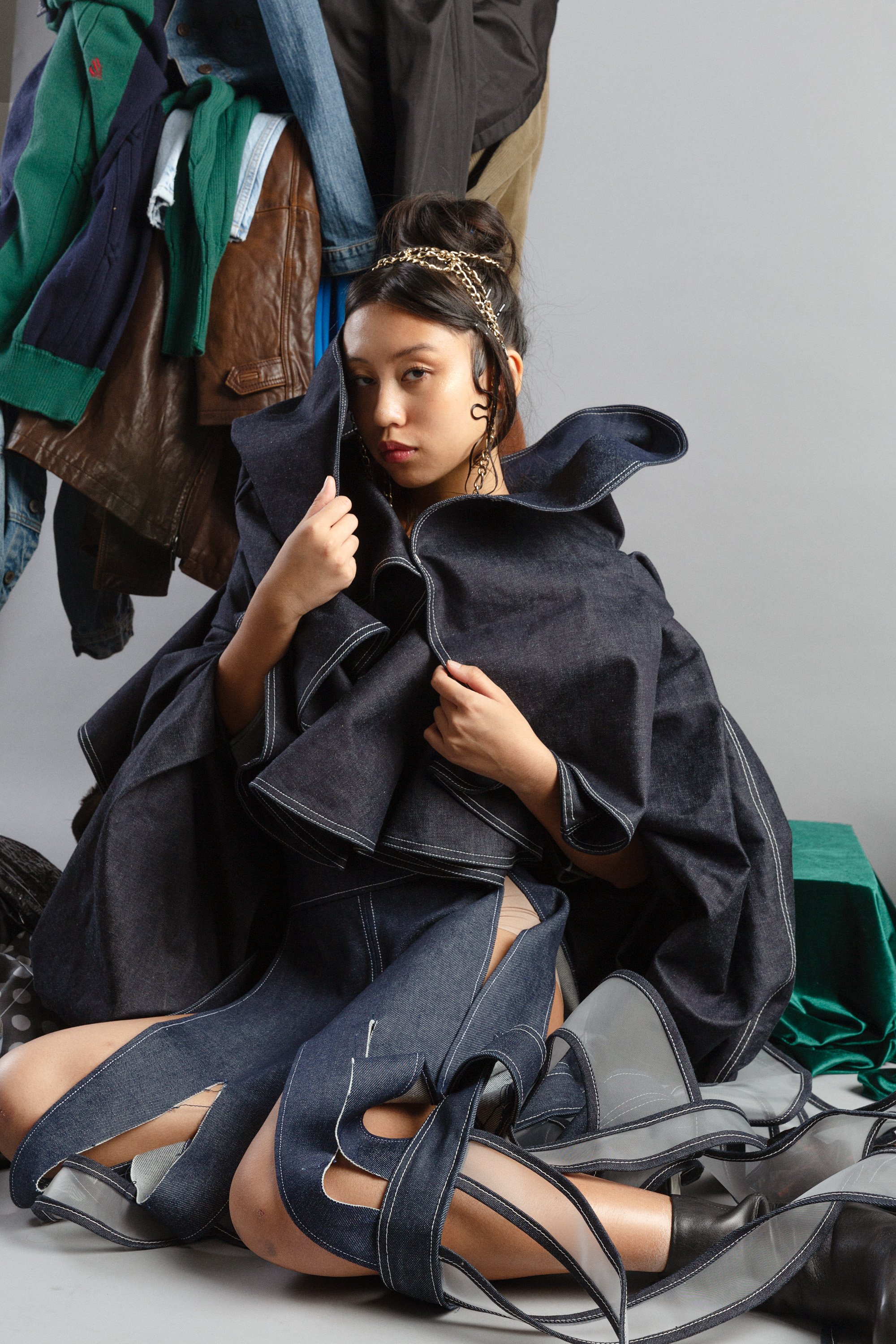Obsessive, Excessive, Expressive?
Outfits by Kelly Zhang
As fashion takes its twists, turns, and transitions into the present and future, we must revisit the past to understand why we are still being reintroduced to pre-existing styles and trends.
When re-examining fashion through an objective lens, we are forced to look at the obsessive, expressive, and excessive nature that comes with style today. As we do this, we try to grasp a firm understanding of the industry that seems to evolve within a blink of an eye. Yet, somehow, fashion manages to hold on to the familiarity and nostalgia of its prior creations. Specifically, this pattern is trapped within trend cycles.
Social media acts as a marketing tool to network with people globally, resulting in many people becoming exposed to beliefs, cultures, and customs they would have otherwise never been familiar with. Often these attributes are interpreted into stylistic choices.
This overstimulation and over-saturation due to social media can cause obsessive consumer behavior. New clothing pieces, businesses, and trends heavily populate the endless content that social media users are exposed to daily. Instant gratification experiences and events such as Black Friday and Cyber Monday target shoppers. Luxury designers have developed cult-like followings, which have remained loyal for decades. The obsessive behavior that the fashion industry encourages is deeply flawed and must be reinvented.
Before becoming subject to the fashion industry, many trends originate as a way of life for certain cultures, classes, races, etc. An issue in Black diasporic, with Fulani and Boxbraids, as well as beauty products and trends such as golden bamboo earrings, nameplates, and waste beads. Gatekeeping of sacred and cultural styles within the original communities has now occurred.
The conversation of whether it’s appropriate or not to partake in these trends has come to the forefront. The question in mind— What’s really authentic today? As these customs and cultures hit mainstream media, the original creditors become lost in translation, as well as the history of the style. This act of erasure shows disinterest in the style’s origin. They are instead, becoming a trend possessed by obsessive behavior, excessive amounts of opinions, and outside perceptions.
Fashion should be all-inclusive. This is a plausible idea when gender is the topic of discussion, as many individuals are deciding to tap into gender fluidity and reinvent themselves in a non-conformist style. However, when involving race with the absence of history or significance, it becomes overtly tone-deaf.
Contrary to fashion’s most urgent theme—inclusivity—luxury fashion exudes exclusivity among social classes. Brands such as Yves Saint Laurent, Louis Vuitton, and Chanel are unattainable to much of the world due to income and inaccessibility. Although this is the case, people in upper-class communities still imitate the fashion of the lower-class communities. Balenciaga even went as far as to produce sneakers that mirrored those worn by the homeless.
Society tends to pick and choose what aspects of fashion are deemed inclusive or exclusive. Preserving authenticity and allowing freedom of expression are equally important; therefore, a middle ground must be found and understood by our society. Obsessive consumer behavior and excessive content shouldn’t dampen fashion's expressive beauty.
Models: Khushi Gupta and Tori Olegario
Photographer: Dahlia Mallebranche
Photo Assistant: Ashley Minier
Stylist, Makeup Artist/Hair Stylist, Editor-in-Chief, Creative Director: Pilar Bradley
Makeup Artist/Hair Stylist, Managing Editor: Nova Krasner
Videographer, Production and Set Director: Luna Abreia
Fashion Director: Monica Robles
Photo Director, Creative Director: Kervens Jean
Social Media and Public Relations Director: Maddie Paradise
Graphic Designer: Lily Kotz
Writer: Xakilah Daniel
Fashion Editor: Audrey Tobin



